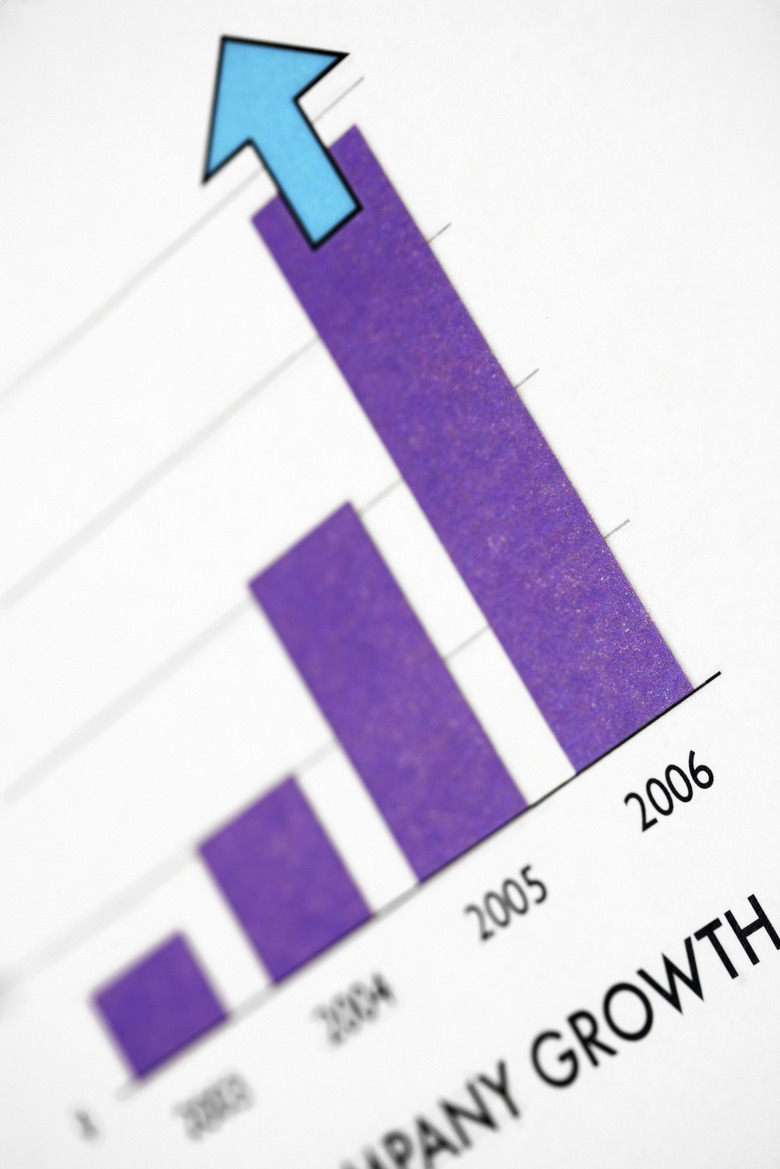How To Make A Relative Frequency Table
Frequency tables are created from the results of a poll. Frequency tables tab the results of a poll and are used to construct histograms, which are graphical representations of the choices. Relative frequency tables are very important, as they express the choices on a poll as percentages instead of number of choices on a poll ( for example, 20% chose "A" instead of 44 people chose "A"). Constructing a relative frequency table is useful to construct histograms and to calculate the statistics related to a poll.
Step 1
Write down the results from the poll, broken down by options. For example: 44 people chose Option A, 56 chose B, 65 chose C, 45 chose D, 10 chose E.
Step 2
Create a table with three columns. Label the first column "Data Value," the second column "Frequency" and the third column "Relative Frequency."
Step 3
Write down the poll options on the "Data Value" column; for example:
Data Value Option A Option B Option C Option D Option E
Step 4
Write down the result from the poll in the "Frequency" column. Add the frequencies and write the total at the bottom of the second column. Continuing the example:
Data Value || Frequency Option A || 44 Option B || 56 Option C || 65 Option D || 45 Option E || 10 TOTAL: || 220
Step 5
Go to the "Relative Frequency Column" column. Divide each frequency value by the total to calculate each relative frequency value. Express the percentage as a decimal between zero and 1. Write down the total at the bottom of the column. Option A had 44 frequency, and a relative frequency of 44/200 = 0.2
Data Value || Frequency || Relative Frequency Option A || 44 || 0.2 Option B || 56 || 0.25 Option C || 65 || 0.30 Option D || 45 || 0.2 Option E || 10 || 0.05 TOTAL: || 220 || 1
TL;DR (Too Long; Didn't Read)
Make sure that the TOTALS for the Relative Frequency add to 1. Since numbers there represent percentages, they must add to 1, which is 100%.
Cite This Article
MLA
Olortegui, Luis. "How To Make A Relative Frequency Table" sciencing.com, https://www.sciencing.com/make-relative-frequency-table-8782254/. 24 April 2017.
APA
Olortegui, Luis. (2017, April 24). How To Make A Relative Frequency Table. sciencing.com. Retrieved from https://www.sciencing.com/make-relative-frequency-table-8782254/
Chicago
Olortegui, Luis. How To Make A Relative Frequency Table last modified March 24, 2022. https://www.sciencing.com/make-relative-frequency-table-8782254/
